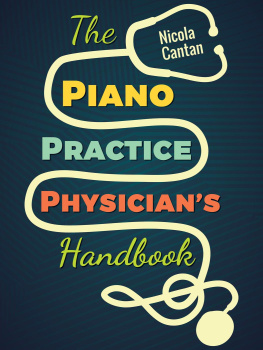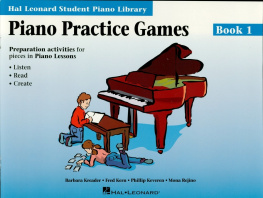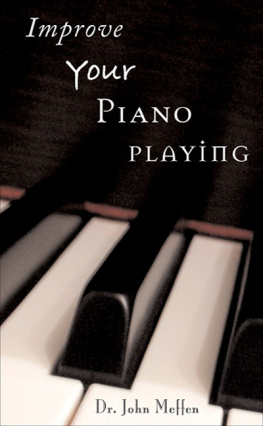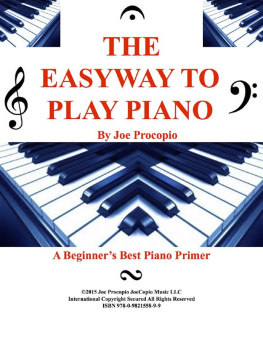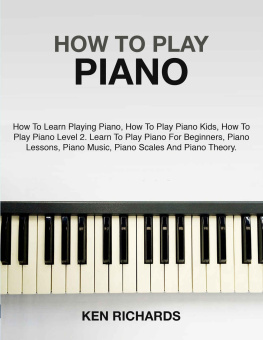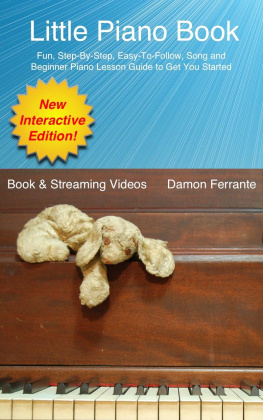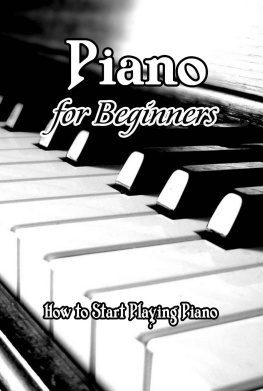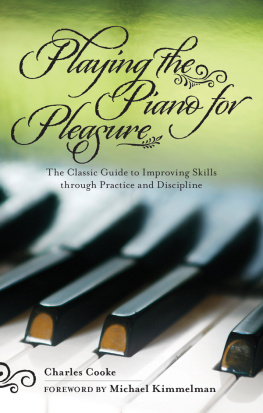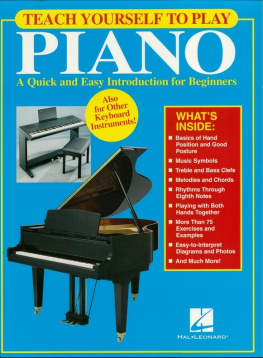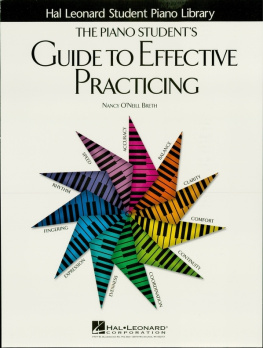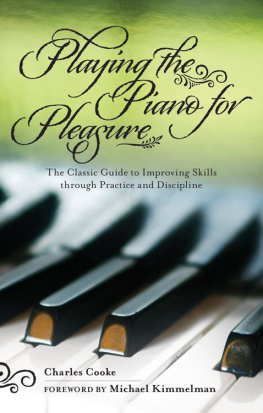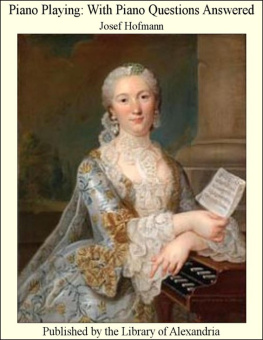The Piano Practice Physician's Handbook
Nicola Cantan
Published by Colourful Keys, 2017.
While every precaution has been taken in the preparation of this book, the publisher assumes no responsibility for errors or omissions, or for damages resulting from the use of the information contained herein.
THE PIANO PRACTICE PHYSICIAN'S HANDBOOK
First edition. March 25, 2017.
Copyright 2017 Nicola Cantan.
ISBN: 978-1386949275
Written by Nicola Cantan.
10 9 8 7 6 5 4 3 2 1
Table of Contents
To my wonderful parents who supported and encouraged me through years of piano study, alongside many, many other pursuits.
And to all my piano students who make charming, amiable and enthusiastic piano practice physician guinea pigs.
Your Piano Practice Clinic
W hat is a piano practice physician?
Thats you! Even if you dont know it yet. If you are a piano teacher, you are also a piano practice physician. A piano practice physician is someone who views each piano practice issue through the analytical, problem solving lens of objective scrutiny. In my 12 years teaching piano, I have seen students come up against many pernicious practice maladies, the most common of which are covered in this book. Some of these can have a lasting impact on a students playing and cause more serious problems down the line. That is why you must be their practice physician.
Its your job to treat your students piano practice issues as they change, grow and progress through their musical studies. Its your job to diagnose practice issues, find cures, and prescribe solutions for your students. Then its their job (and sometimes their parents job) to take action in the six days between lessons.
Lets talk about those six days for a moment. Maybe right now youre thinking: Yes, but then they dont practice!. This may be true, but perhaps not as true as you think. Chances are youre a wonderful teacher already. Im sure you give students plenty of advice and instruction on what and how to practice at home only to find they dont practice, or they dont practice enough. And if youre like most teachers you fret, despair and tell them yet again how important good practice is.
But how much of your lessons are really spent solving their practice problems? Do you involve them in creating solutions? Do you check up on the practice process and fine tune it the next week? Do you just tell, or do you show, involve and empower your students to practice effectively at home?
If you can train yourself to see each practice issue as a puzzle to be solved, your students will start to look at their piano studies in a similar way. Diagnostic remedies will not only be a more constructive use of practice time, but your students minds will be more engaged also. More engagement means their efforts will be even more effective and theyll have more fun too.
What should piano practice look like?
How often do you find yourself telling your students or their parents that they need to practice more? Good practice routines and habits are certainly important; I think we can all agree its beneficial to discuss habits and expectations for piano studies. What I think is even more important still, and is given little attention, is what practice should look like. If your students think that practice means playing a piece over and over until its correct, then they are wasting precious time at the piano. If you tell them how to practice at home but fail to implement the strategies in the lesson, then you may be helping them to waste their time. Very few students will follow your instructions once they get home, and there are two main reasons for this.
The first is that verbal or written instructions are not vivid enough, and following these instructions will feel harder than practicing the old way or not practicing at all. The key ingredient in these cures for piano practice ailments is that they make use of your students imagination. The prescriptions in The Piano Practice Physicians Handbook will stick out in a students mind because they use a range of visual, narrative and gameified techniques that are truly memorable. No one can forget falling in the River of Doom or becoming a Bionic Pianist. Imagination is the most powerful ointment in the piano physicians cabinet, so use it. And, while youre at it, you just might reawaken your own imagination. Grown-ups can learn a thing or two from kids in this regard.
The second half of the magic practice pill lies in the way you administer your cures. We need to coach our students through these processes many times in the lesson before they will follow through at home. Your students may know how they should practice, but that doesnt mean they will take action on their own. This is why the In lesson section of each prescription in this handbook is almost always longer than the At home section. This book is about practice but most of the work of good piano practice happens in the lesson. The daily time we normally call piano practice should be a direct reflection of what happens in the lesson. Good piano teaching means practicing practicing during lesson time so that your students know exactly what to do at home.
How to use this handbook
In this book, I will take you through 32 of the most common piano practice ailments and their cures. That much is a given its right there on the cover. You will likely recognise some, many, or all of the practice illnesses described in this book from your own teaching. After each description, you will find two possible cures for each of the practice maladies. You can choose the one that best suits the students age, level and the severity of the condition. For clarity, you will also find a list of the symptoms and related diagnoses. These will guide you in identifying the particular ailment your student is suffering from and avoiding misdiagnosis so that you can find the proper cure.
You can read through this book, prescribe the remedies and get some great results from the process. These are practical solutions to problems you will face in your piano studio every day. If you implement them they will work, and you and your students will have more fun and get better results during lessons.
However, I want to encourage you to look a little deeper. Can you take this way of looking at the 32 common piano practice ailments and apply it in all your teaching? Can you stop lamenting the fact that little Johnny didnt get his practice done, and start thinking about how you could better prepare him to practice this week? And how might you be able to solve the underlying problems so that he finds practice easier and more rewarding?
The best way to start shifting your mindset around practicing is to begin implementing the ideas in this book. Read all the way through; jump back and forth to sections that are relevant to you; refer back to it to find a cure for a particular student (preferably before you get to hair-pulling, teeth-grinding stage). Always keep in mind this new way of looking at your role as a piano teacher. As a piano practice physician, each weekly appointment should be a demonstration in the science and art of great piano practice.
A little note on gender
There are many fine piano students who happen to be girls, boys, women and men. However, writing about more than one gender simultaneously is awkward. Its awkward to write and its even more awkward to read s/he, he/she, or about a fictitious student who changes gender inexplicably from one paragraph to the next. In an effort to not distract you from learning effective practice strategies for your students, I have chosen to give examples using the feminine form only. I hope you will see this as the fair compromise that I do. In my mind, my example students name is Jane, and she has somehow managed to come up against every single piano practice ailment detailed in this book the poor darling. So feel sorry for dear Jane, and know that she could just as easily be James or Jeremy.

